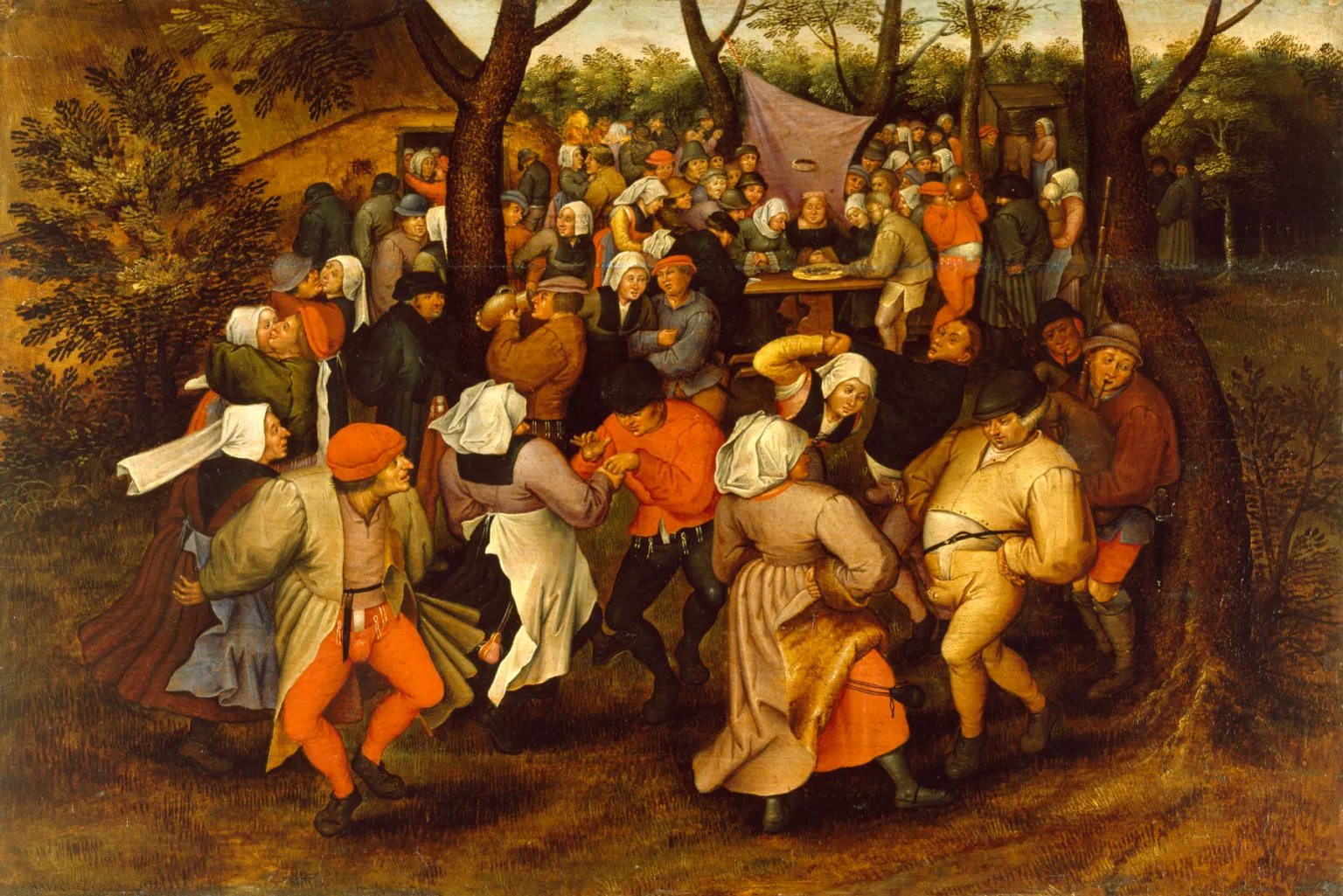Get ready to be transported back in time to 1518, when a strange and unforgettable event left an entire town dancing their feet off! Known as the “Dancing Plague,” it’s a tale that’s both strange and fascinating, a reminder that history can sometimes be downright peculiar.
Dancing Plague of 1518: A Unforgettable Historical Mystery
Imagine a place where people couldn’t stop dancing for days on end. No, it’s not a music festival gone wild, but the real-life event known as the Dancing Plague of 1518.
In the heart of what was then the Holy Roman Empire, the city of Strasbourg became the stage for this bizarre phenomenon. It started in July when a young woman named Frau Troffea suddenly started dancing in the streets. At first, it may have seemed like a harmless prank, but as days turned into weeks, more and more people joined in the dance.
Like a contagious virus, the dancing spread like wildfire. Citizens from all walks of life, from young women to respected elders, found themselves unable to resist the irresistible rhythm. They danced day and night, regardless of exhaustion or injury.
Historians have scratched their heads for centuries, trying to crack the code of what caused this mysterious plague. Some believe it was caused by ergot, a fungus that affects rye and can lead to hallucinations. Others suggest mass hysteria or even psychological factors.
Whatever the cause, the dancing plague had devastating consequences. People danced themselves to exhaustion and even death. Up to 100 lives were lost as a result of the relentless rhythm.
The dancing plague eventually subsided, but its legacy remains. It serves as a haunting reminder of how even the most ordinary of things can take an extraordinary and unexplainable turn. To this day, we may never fully understand the Dancing Plague of 1518, but its story continues to fascinate and puzzle us.
Timeline of the Dancing Plague:
| Date | Event |
|---|---|
| July 1518 | Frau Troffea begins dancing in the streets of Strasbourg |
| Days later | More people join in, forming a dancing crowd |
| Weeks later | The dancing plague spreads to other villages and towns |
| September 1518 | The dancing finally subsides |
Could these have been early mass hysteria cases or perhaps a strange form of the dance disease?
What were the symptoms of the dancing plague of 1518?
Imagine people dancing uncontrollably, like they couldn’t stop for days! That’s what happened during the bizarre Dancing Plague of 1518. Here’s what folks went through in this strange epidemic:
Crazy Dance Moves:
- They just couldn’t resist dancing, like they had an irresistible urge.
- They danced for hours, even days, without getting tired.
Physical Extremes:
- Their dancing was intense and exhausting.
- They would dance so hard, they were completely wiped out.
Hallucinations and Visions:
- Some folks saw things that weren’t really there, like hallucinations.
- Others had vivid dreams while they were dancing.
Laughing, Screaming, and Seizures:
- Along with the dancing, victims often laughed, screamed, or had seizures.
- It was like they couldn’t control their bodies.
Mental Turmoil:
- Besides the physical symptoms, the dancing plague also messed with people’s minds.
- They felt confused, anxious, and depressed.
How it Started:
The plague started in the summer of 1518 when a woman named Frau Troffea started dancing in the streets of Strasbourg. Crazy, right? Fast forward a few weeks, and hundreds of people were dancing too! It was like a contagion spreading like wildfire.
Possible Reasons:
We still don’t know what caused this bizarre plague. Some theories are:
- Nerve problems
- Mass hysteria (when a group of people act weird together)
- Ergot poisoning (a fungus that can make you hallucinate)
The Legacy:
The Dancing Plague of 1518 left a mark on history. It showed us how fragile human health can be and how powerful group behavior can get. It made folks scared and confused, but it also got scholars and doctors thinking about what might have caused it.
How long did the dancing plague of 1518 last?
Imagine if you witnessed hundreds of people dancing uncontrollably for days or even weeks. That’s what happened during the Dancing Plague of 1518. It was like a scene out of a bizarre dream.
So, how long did this strange outbreak last? Well, it started in July of 1518 and continued until September of that year. That’s about two miserable months where people couldn’t stop dancing.
During that time, around 400 unfortunate souls were affected by this dancing fever. They couldn’t control their bodies, and they kept dancing until they dropped from exhaustion. Sadly, some even danced themselves to death.
It’s still a mystery what sparked this bizarre plague. Some theories suggest it was caused by mass hysteria, while others believe it might have been a result of stress or some unknown infection. Whatever the reason, it was a truly unsettling event.
And just as suddenly as it started, the dancing plague stopped. It’s as if someone flipped a switch and the dancing madness vanished into thin air. To this day, historians and scientists are still puzzled by what caused it and why it ended so abruptly.
How many people died from the dancing plague of 1518?
Digging into the mysterious dancing frenzy
In the bustling city of Strasbourg in 1518, a peculiar madness swept through like a whirlwind, leaving behind a trail of bewildered dancers and a haunting toll on human lives. Known as the Dancing Plague, this strange affliction gripped the town, leaving historians scratching their heads even to this day.
Now, let’s get down to the nitty-gritty: how many people actually lost their lives to this bizarre mass hysteria? Well, the truth is, we don’t have a definitive answer, folks. Back then, they weren’t as diligent about keeping records as we are today. But hold your horses! Scholars have done some digging and come up with some educated guesses.
Some say that around 50 folks danced themselves to their graves daily at the height of the plague. That’s like losing a whole busload of people every single day! Others believe the toll was lower, closer to 15 souls per day. Whatever the true number, it’s clear that this plague was no laughing matter.
Unraveling the mystery
What caused this dancing madness? Well, that’s where things get even more puzzling. Some scholars reckon it was just stress getting the better of people, making them lose their minds in a dance-off. Others think it could have been a bad batch of food that sent everyone tripping the night fantastic.
Whatever the reason, the Dancing Plague of 1518 remains a fascinating piece of history, a time when mass hysteria took hold and people danced their hearts out, with some paying the ultimate price.
FAQ
Q1: What caused the dancing plague of 1518?
A1: The exact cause of the dancing plague of 1518 is still unknown, however, some historians propose that it may have been caused by a combination of factors, including religious fervor, stress, and mass hysteria.
Q2: What were the symptoms of the dancing plague of 1518?
A2: The symptoms of the dancing plague of 1518 varied widely, but some of the most common included: uncontrollable dancing, hallucinations, convulsions, and exhaustion.
Q3: How long did the dancing plague of 1518 last?
A3: The dancing plague of 1518 lasted for several months, from July to September 1518.
Q4: How many people died from the dancing plague of 1518?
A4: The exact number of deaths from the dancing plague of 1518 is unknown, however, some historians estimate that as many as 100 people may have died.
Q5: What is the ergot theory of the dancing plague of 1518?
A5: The ergot theory is one of the most popular theories about the cause of the dancing plague of 1518. This theory suggests that the plague was caused by people consuming bread that was contaminated with ergot, a fungus that can cause hallucinations and other neurological symptoms.
- Unraveling Einstein’s Legacy: Who Inherited His Genius? - July 14, 2025
- Unlock Einstein’s Family Tree: Bernhard Caesar & Untold Stories - July 14, 2025
- Unveiling Bernhard Caesar Einstein: His Life & Albert Einstein’s Legacy - July 14, 2025

















Comments are closed.